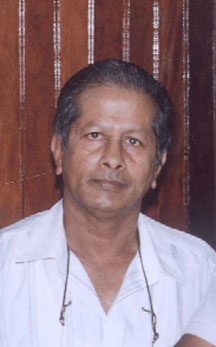GAWU Head, Komal Chand says that GuySuCo is not addressing one of its major problems –the quality of canes in the ground – even as the corporation now faces the task of producing at least 143,000 tonnes of sugar in its second crop to meet its key EU quota and the local market.
GuySuCo’s Chief Executive Officer, Paul Bhim told Stabroek News last week that currently the corporation was conducting cane estimates for all seven estates. He noted that going into the second crop of the year, GuySuCo had to ensure that enough cane was planted to produce the yield necessary to make the original second crop target of 170,000 tonnes. However, with a dismal first crop of less than 48,000 tonnes produced, the second crop will need to make up an additional 13 percent, bringing the new second crop target to 192,000 tonnes of sugar. The revised figure seems hardly likely as in 2012, production totalled 218,000 tonnes: 71,000 in the first crop and 147,000 in the second crop.
Given the low first crop figure, questions have been raised about whether Guyana might have to import sugar for its domestic needs so as to ensure that its lucrative European Union quota was met.

Bhim said that “we are not looking at importing sugar as yet because the second crop needs to be finished…but we have had to import sugar in the past”. He said that GuySuCo has two main obligations: the 167,000-tonne European quota and the domestic market. Bhim noted that GuySuCo has in the past sold excess sugar to Caribbean countries through the Caricom single market but there will be none of that this year. He noted that there was no specific arrangement with any other Caribbean country and that sugar was only sold if GuySuCo had excess amounts. Bhim mentioned that an agreement did expire in May which could have been renewed to provide a small amount of sugar to Caribbean countries but GuySuCo would not be renewing any trade relationships until it had an accurate projection of production for the second crop.
Industry analysts have pointed out that the low sugar production is denying the corporation extra revenue and foreign exchange from sales to the Caribbean and other places. At one point, GuySuCo also sold into the US market while also servicing the EU quota and the Caribbean.
Bhim told Stabroek News that out of the 48,000 tonnes produced during the first crop of 2013, an amount will be set aside for the local market and the rest will go towards satisfying the EU quota. He said that in the next two to three weeks GuySuCo would be finalising the assessments of the estates and the findings would go to the Board. He said that “we have to look at the fields…the estimates need to be done before we go ahead or make any judgments and assumptions.”
On the question of meeting the quota and domestic needs, GAWU’s President Chand stated that “it all depends…it is a case where they have to have the cane on the ground to produce the sugar to make that target that they have set”. He said that GuySuCo was heading into the second crop with a lot of pressure. He said that “they have assured the public that they have enough cane on the ground and that they will meet the 240,000 tonnes.”

Chand told Stabroek News that the worrisome part was that the corporation refused to address the cane quality issue. He said that “every five ratoons you plough back the field…they are getting poor yield from the cane per hectare and then poor sugar from the cane”. Chand stated that the fields needed to be ploughed on a regular basis and 20 percent replanting done on a yearly basis, “but they are saying they can’t do this. They have said that the weather is preventing them from the replanting because of the limited opportunity days.”
GAWU’s president told Stabroek News that “look at the figures for the past ten years and you’ll see that the quality of the cane is not as good”. He continued that the yield of the cane has fallen by 25 percent because the replanting project has not been made a priority. Chand said that as a result the industry will suffer, “they are not getting the cane per hectare which suggests that they are not getting the yield…you can’t sacrifice the replanting and expect to make targets.”
Chand said that the weather was always a debilitating factor and that the low opportunity days have made it difficult for work to be done. GuySuCo is heading into an early second crop with a 22,000 deficit; however 2012’s total production meant that GuySuCo went into 2013 with a 27,000-tonne surplus after meeting both the domestic 2000-tonnes-per-month demand and the EU quota.
GuySuCo’s yearly agreement with the EU has changed from a July to June season to run concurrent with the calendar year. Previously the second crop of one year and the first crop of a new year would be used to fulfil the EU quota. GuySuCo is in a better position by utilizing the calendar year because with only 147,000 tonnes produced during the second crop of 2012, the State-owned corporation would’ve had less than 4,000 tonnes of sugar as a buffer.
In 2012 during a series of strikes, the corporation had to consider purchasing low grade Guatemalan sugar to serve the local market as the corporation focused its priorities on meeting the EU quota. GuySuCo’s shortcomings in 2012, which management blamed in the main on the weather, also meant that Antigua and Barbuda was forced to not rely on Guyana as its main sugar source. Antigua and Barbuda was allowed to import just 1500 tonnes from outside the Caricom region bypassing the Common External Tariff due to GuySuCo’s failure.





